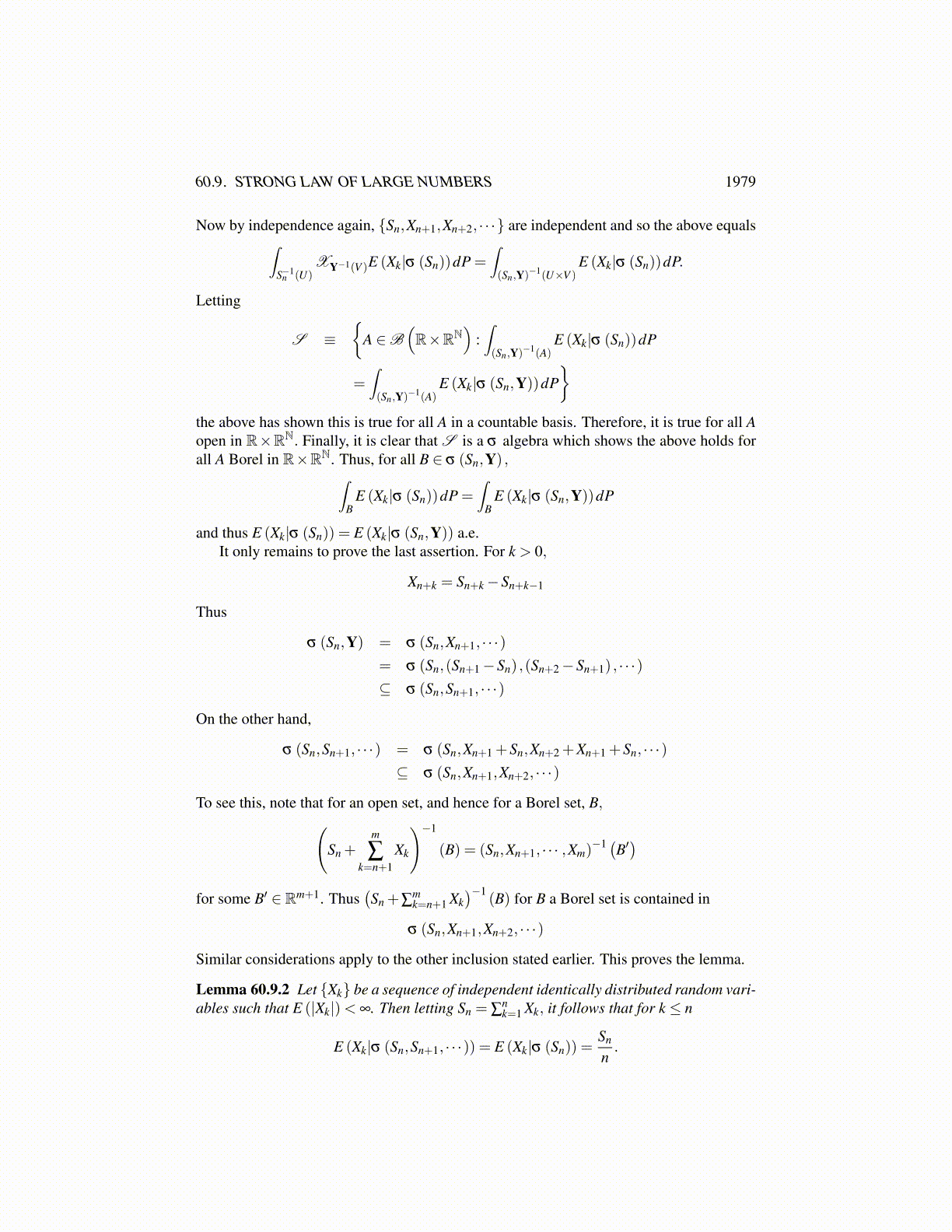
60.8. A REVERSE SUBMARTINGALE CONVERGENCE THEOREM 1979
and so the above
≤∫[Xn≥λ ]
E (Xk|Fn)dP−∫
Ω
XkdP+ ε +∫[−Xn<λ ]
E (Xk|Fn)dP
=∫[Xn≥λ ]
XkdP−∫
Ω
XkdP+ ε +∫[−Xn<λ ]
XkdP
=∫[Xn≥λ ]
XkdP−∫
Ω
XkdP+ ε +∫[Xn>−λ ]
XkdP
=∫[Xn≥λ ]
XkdP+
(∫Ω
(−Xk)dP−∫[Xn>−λ ]
(−Xk)dP)+ ε
=∫[Xn≥λ ]
XkdP+∫[Xn≤−λ ]
(−Xk)dP+ ε =∫[|Xn|≥λ ]
|Xk|dP+ ε
Applying the maximal inequality for submartingales, Theorem 60.6.4,
P([
max{∣∣X j
∣∣ : j = n, · · · ,1}≥ λ
])≤ 1
λ(E (|X0|)+E (|X∞|))≤
Cλ
and taking sup for all n,
P([
sup{∣∣X j
∣∣}≥ λ])≤ C
λ
It follows since the single function, Xk is equiintegrable that for all λ large enough,∫[|Xn|≥λ ]
|Xn|dP≤ 2ε
and since ε is arbitrary, this shows {Xn} for n > k is equiintegrable. Since there are onlyfinitely many X j for j ≤ k, this shows {Xn} is equiintegrable. Hence {Xn} is uniformlyintegrable. This proves the lemma.
Now with this lemma and the upcrossing lemma it is easy to prove an important con-vergence theorem.
Theorem 60.8.3 Let {Xn,Fn}∞
n=0 be a backwards submartingale as described above andsuppose supn≥0 E (|Xn|)< ∞. Then {Xn} converges a.e. and in L1 (Ω) to a function, X∞.
Proof: By the upcrossing lemma applied to the submartingale {Xk}Nk=0 , the number
of upcrossings (Downcrossings is probably a better term. They are upcrossings as n getssmaller.) of the interval [a,b] satisfies the inequality
E(
UN[a,b]
)≤ 1
b−aE((X0−a)+
)Letting N → ∞, it follows the expected number of upcrossings, E
(U[a,b]
)is bounded.
Therefore, there exists a set of measure 0 Nab such that if ω /∈ Nab,U[a,b] (ω) < ∞. LetN = ∪{Nab : a,b ∈Q}. Then for ω /∈ N,
lim supn→∞
Xn (ω) = lim infn→∞
Xn (ω)